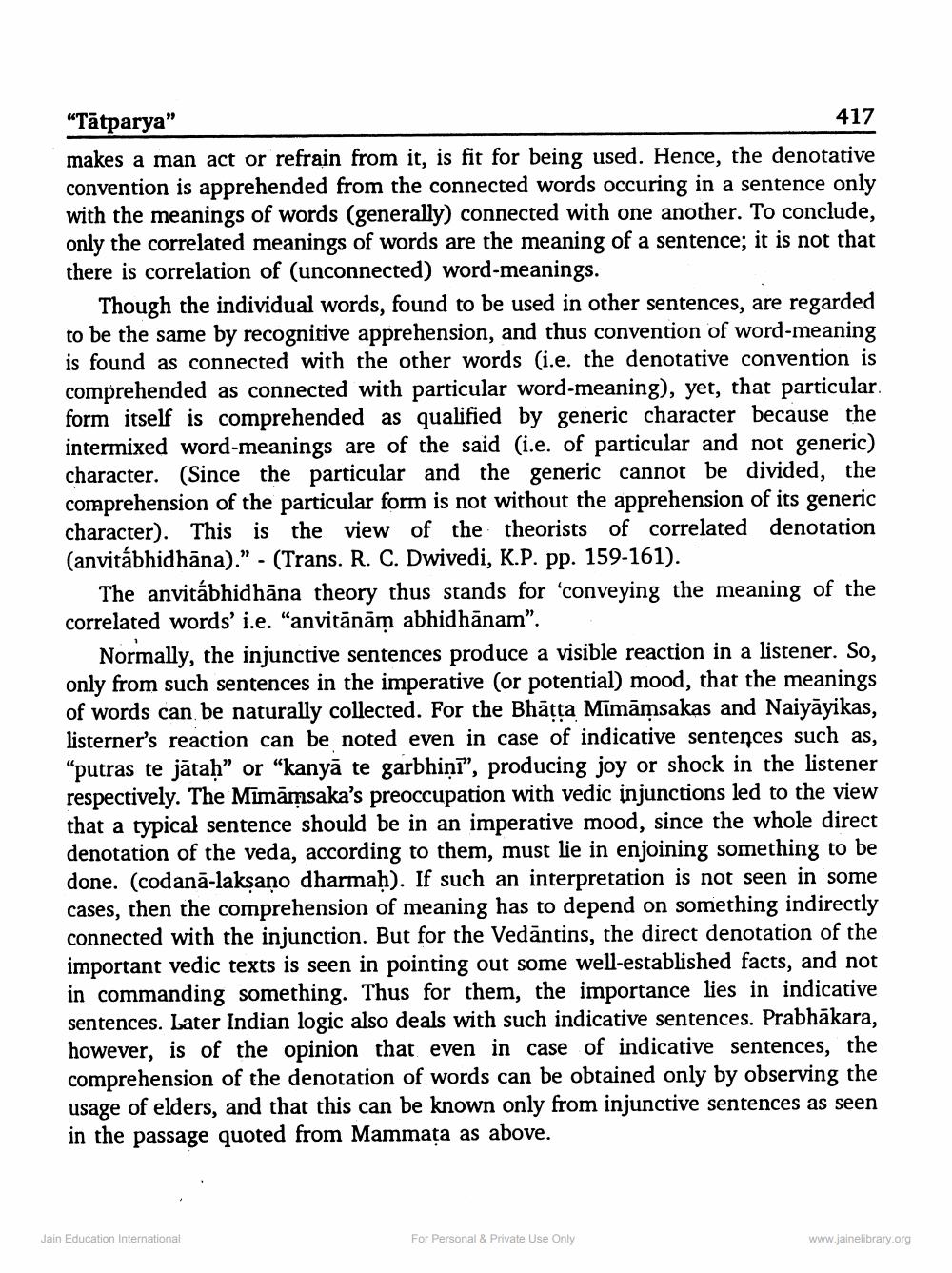________________
"Tātparya"
417
makes a man act or refrain from it, is fit for being used. Hence, the denotative convention is apprehended from the connected words occuring in a sentence only with the meanings of words (generally) connected with one another. To conclude, only the correlated meanings of words are the meaning of a sentence; it is not that there is correlation of (unconnected) word meanings.
Though the individual words, found to be used in other sentences, are regarded to be the same by recognitive apprehension, and thus convention of word-meaning is found as connected with the other words (i.e. the denotative convention is comprehended as connected with particular word-meaning), yet, that particular. form itself is comprehended as qualified by generic character becaus intermixed word-meanings are of the said (i.e. of particular and not generic) character. (Since the particular and the generic cannot be divided, the comprehension of the particular form is not without the apprehension of its generic character). This is the view of the theorists of correlated denotation (anvitábhidhāna)." - (Trans. R. C. Dwivedi, K.P. pp. 159-161).
The anvitábhidhāna theory thus stands for 'conveying the meaning of the correlated words' i.e. "anvitānām abhidhānam”.
Normally, the injunctive sentences produce a visible reaction in a listener. So, only from such sentences in the imperative (or potential) mood, that the meanings of words can be naturally collected. For the Bhātta Mimāmsakas and Naiyāyikas, listerner's reaction can be noted even in case of indicative sentences such as, “putras te jātah” or “kanyā te garbhiņi”, producing joy or shock in the listener respectively. The Mimāmsaka's preoccupation with vedic injunctions led to the view that a typical sentence should be in an imperative mood, since the whole direct denotation of the veda, according to them, must lie in enjoining something to be done. (codanā-laksano dharmah). If such an interpretation is not seen in some cases, then the comprehension of meaning has to depend on something indirectly connected with the injunction. But for the Vedāntins, the direct denotation of the important vedic texts is seen in pointing out some well-established facts, and not in commanding something. Thus for them, the importance lies in indicative sentences. Later Indian logic also deals with such indicative sentences. Prabhākara, however, is of the opinion that even in case of indicative sentences, the comprehension of the denotation of words can be obtained only by observing the usage of elders, and that this can be known only from injunctive sentences as seen in the passage quoted from Mammața as above.
Jain Education International
For Personal & Private Use Only
www.jainelibrary.org




